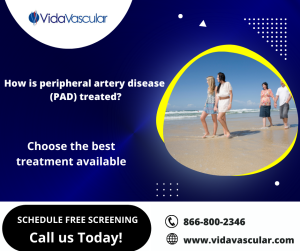How is peripheral artery disease (PAD) treated?
How is peripheral artery disease (PAD) treated?
Many people with peripheral artery disease (also called peripheral arterial disease or peripheral vascular disease) have discomfort or pain when walking, called claudicating. The reduced blood flow may damage skin, muscle, and other tissues. In severe cases, blood clots or other problems can block arteries completely and cause limb loss. Treatment can prevent these outcomes.

Risk increases with age—12 to 20 percent of people with PAD are over 60 years old. Smokers and people who have diabetes are also at risk.
Peripheral artery disease results when you have atherosclerosis or hardening of the arteries due to plaque buildup.
.png)
.png)
Comments
Post a Comment